|
Mahmoud Vatankhah (1), Nader Papi (2), Farhad Mirzaei (2)
(1) Animal Science Research Department, Chaharmahal and Bakhtiari Agricultural and Natural Resources Research and Education Center, AREEO, Shahrekord, Iran. (2) Agricultural Research Education and Extension Organization (AREEO), Animal Science Research Institute of Iran, Karaj. History of goat breeding in the province There are more than seven thousand years of history of animal husbandry in the Chaharmahal and Bakhtiari provinces. Perhaps the start of animal husbandry in this province was by pastoralists utilizing access to forage sources for livestock. Small animals (sheep and goats) were the focus in these provinces. The Bakhtiari area is where humans domesticated animals and plants for the first time. Also, some animals, especially goats, were tamed for the first time in the mountains of Bakhtiari. Geographic distribution areas The Bakhtiari black goat breed is one of the most popular in Iran. Although this breed is distributed across provinces in the Zagros Mountains, this population is mainly located in the western and southwestern parts of Iran, especially in the Chaharmahal and Bakhtiari, Lorestan and Khuzestan provinces.
0 Comments
Mir Hassan Beiranvand (1), Alireza Chegeni (1), Nader Papi (2), Farhad Mirzaei (2) 1) Agricultural Research Education and Extension Organization (AREEO), Animal Science Department, Lorestan Agricultural and Natural Resources Research and Education Center, Khorramabad, Iran. 2) Agricultural Research Education and Extension Organization (AREEO), Animal Science Research Institute of Iran, Karaj. History of goat breeding in the province
Although no written documents indicate when Lori sheep and goat rearing began, it is generally believed that Lorestan province was the earliest region of sheep and goat keeping in Iran. Archaeological evidence from caves and carvings on the stones and ancient handicrafts in Lorestan province, such as Kalmankareh cave, reflects this fact. There is a long history of breeding goats in the area, dating back about 8,000 years. Geographic distribution areas The original habitats for Lori goats are the regions of Khorramabad, Poldokhtar, and Elshtar cities. These goats are also reared in other parts of the province. Najmeh Kargar (1), Nader Papi (2), and Farhad Mirzaei (2) 1. Agricultural Research Education and Extension Organization (AREEO), Animal Science Research Department, Kerman Agricultural and Natural Resources Research and Education Center, AREEO, Kerman, Iran. 2. Agricultural Research Education and Extension Organization (AREEO), Animal Science Institute of Iran, Karaj. 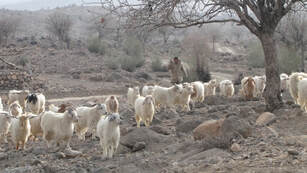 A flock of Raeini Cashmere goats A flock of Raeini Cashmere goats History of goat breeding in the province To know the history of raising Cashmere goats, one should refer to Kerman’s history of cashmere products. Raising Cashmere goats was earlier than the cashmere products. The shawl was one of the essential cashmere products in the past. The definition of shawl by Dehkhoda is cashmere or wool textiles woven in Iran, especially in the city of Kerman. Also, a shawl is defined by Moin: as a simple or patterned textile that is woven from cashmere or wool. For the first time in historical references (Georgie Zidane), the Kermani shawl is mentioned around 333AH and 944AD. Marco Polo refers to knitted products in Kerman in his travelogue. Telegrapher reported 15,000 shawls woven and many shawls production workshops in Kerman in 1879. During the reign of Fath-Ali Shah Qajar, the number of Cashmere goats grew in other areas of Iran, but the quality and quantity of cashmere production declined. Bastani Parizi believes that the production of desirable cashmere is due to the low rainfall in Kerman. Mohammad Hossein Hadi Tavatori (1), Nader Papi (2) and Farhad Mirzaei (2) 1) Agricultural Research Education and Extension Organization (AREEO), Animal Science Research Department, Qazvin Agricultural and Natural Recourses Research and Education Center. AREEO. Qazvin, Iran. 2) Agricultural Research Education and Extension Organization (AREEO), Animal Science Research Institute of Iran, Karaj. History of goat rearing in the province
Goat farming has a long tradition in Qazvin province. This helpful animal produces valuable products such as meat, milk, skin, and hair fed by forage and roughages. Goat breeding in Qazvin province is specialized to highlands where there are challenging conditions to rearing other farm animals. Geographic distribution areas Areas of Qazvin Province have the largest goat population, including Eastern Alamut, Western Alamut, Lower Tarom (Tarom-e-Sofla), and rural of Qazvin. Also, in this province, about 5% of some sheep flocks are goats. Population Based on the current data, the goat population is over 158 thousand heads. The types of rearing systems The traditional goat keepers in Qazvin province are overwhelmingly rural and dependent upon mountainous pastures during warm seasons. In the spring, herds of goats feed on the village meadows, and they use fields upstream from mid-June to the end of the summer. In the cold seasons, they stay at the fold in their villages, and fodder is brought to them. Rahman Rostamkhani (1), Seyyed Saeid Mousavi (2), Hossein Ghorbani (1), Seyyed Vahid Mortazavi (1), Mohammad Taghi Moslemioun (2), Mohammad Hossein Nemati (2), Hassan Mohammadi Nedjad (2), Nader Papi (3) and Farhad Mirzaei (3) (1) Animal Production Improvement Administration of Zanjan province. Agricultural Jihad Organization. Zanjan, Iran. (2) Animal Science Research Department. Zanjan Agricultural and Natural Recourses Research and Education Center. AREEO. Zanjan, Iran. (3) Agricultural Research Education and Extension Organization (AREEO), Animal Science Institute of Iran, Karaj. 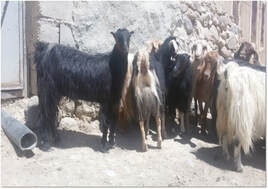 History of goat rearing in Zanjan province Archeological studies show the history of goat domestication dates to 7000 BC. Historical references also refer to Persia (Iran) as the land of origination of goat domestication. Since the earliest times, Iranians have reared goats for meat, milk, fiber, and skin supply. Currently, goat rearing has a notable role in Iranian nomadic and rural household’s life economy. The recent year’s goat keeping importance has been revealed much more because of climate changes, feed source limitation, and lack of relative advantage of pure breed farm animal production in Iran. Goat keeping has an essential role in meat and milk production in Zanjan province. Historically Name of Afshari goat is originated from the Afshar tribes who first reared this ecotype of goat in the region. Geographic distribution area Afshari goat population has been distributed in the different parts of the Zanjan province in about 20000 Km2.surface area, including highland altitudes and plains areas with other climatic conditions. Population Based on the current official data, the Afshari goat population is estimated at about 130,000 heads in the province. Rearing systems Goat keeping procedures are generally rural or semi-nomadic system. Goats are often reared together with sheep and in the grazing livestock act as a frontier animal or leadership of the flocks. Pure herds of goats are not usually seen among the local livestock. Job creation Among the farm animal rearing, goat keeping is a part of daily life of the rural and tribes because of their great interest in this occupation. They usually keep goats not only to improve their incomes but also for the natural compatibility and attractive appearance of their herds. The cultural, social, and economic relationship among nomadic and rural communities Afshari goats with 130,000 heads produce some 550 tons of meat and 2,000 tons of milk in the province annually. Milk, fiber, and meat of Afshari goat are used by the nomadic and rural, and also urban people. Goat keeping has an important role in rural and nomadic life economy because of the food source supply and earning incomes. Hence, Afshari goats have great economic importance for rural or nomadic households. Appearance features Few references indicate the phenotypic characteristics of Afshari goat among the goat sciences literature. In general, the dominant color of the coating fiber is pure black, but other colors are seen in the flocks. Both male and female goats are hornless. Bucks have a strong and muscular body, and because of the good capability of grazing in poor pastures or feeding low-quality forages and they can return good income for their owners. Does have good performance of milk production, daily milk yield ranges from 1.5-2.3 Kgs. Mature bucks weigh more than 60 kgs., which is a good potential for meat production. Export
Goat yields are generally consumed inside the province, and the exportation of the products is not performed. Items used for products Of the Afshari goat products, hair products can be mentioned. Hair fiber growth is about 25 cm/year, and each goat can produce some 400 grams of hair per year, which is used for preparing of handicrafts and traditional clothes in most villages. The skin is used in the leather industry. Milk is used for feeding kids, and the rest of it is used to prepare cheese, yogurt, whey, and some other local milk derivatives. Mature bucks weigh more than 60 kgs., which supply the local and urban residents’ meat needs. Measures for identifying and genetic improvement There is a decent rate of multiparity in Afshari goats, which can result in high performance and more economic animals, by performing of interbreeding selections or other livestock improvement programs. In 2007, an on-farm project plan entitled “An investigation on crossbreeding of the Sannen bucks with native black goat (Afshari does)” was carried by the Research Center for Agriculture and Natural Resources of Zanjan province. In these projects, the performance of first and second generation of crossbreds (F1 and F2) had a relatively good result, but in most cases, their adaptability was weak in the rural rearing condition. Suggestions for performance improvement As a national genetic resource, Afshari goats have valuable production performance and traits which has not been studied scientifically. For identification of the production performance of this ecotype, it is necessary to do comprehensive researches and studies. AbdulMahdi Kabirifard (1), Sayed AbuTaleb Sadeghi (1), Mohammad Sadegh Yazdanshenas (2), Nader Papi (3), Farhad Mirzaei (3) 1. Animal Science Department, Bushehr Agricultural and Natural Resources Research and Education Center, AREEO, Bushehr, Iran 2. Jihad-e-keshavarzi Organization of Bushehr Province 3. Agricultural Research Education and Extension Organization (AREEO), Animal Science Research Institute of Iran, Karaj. History of goat breeding in the province
Adani goat almost since the European colonial countries participated in the Persian Gulf in Bushehr province was entered. This goat in coastal areas where the climate is hot and humid, easily adapted, and able to endure high and with optimal milk production is approximately indigenous. This goat over many generations under the influence of natural and artificial selection have been reared. In terms of local, the ecotype named Adani, also called Khargi and Gaysi. Geographic distribution areas This goat exists only in the Bushehr province, mostly in coastal areas from Genaveh to Assaluyeh. Population The population of this goat in herds is almost 35 thousand head crossed with native black goat and Pakistani in most townships. At present, in the breeding station for Adani goats, there are 340 Adani goats and 90 Adani crossed with Alpine and Sannen goats. Written by Abdulhamid Karimi*, Nader Papi**, Farhad Mirzaei** * Animal Science Department, Fars Agricultural and Natural Resources Research and Education Center, AREEO, Shiraz, Iran ** Animal Science Research Institute of Iran, Agricultural Research Education and Extension Organization (AREEO), Tehran, Iran 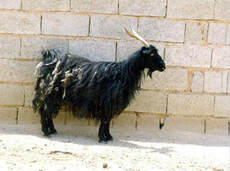 female Abadeh Cashmere goat female Abadeh Cashmere goat History of Abadeh Cashmere goat breeding in the province The history of breeding Abadeh Cashmere goats is not well known. Livestock (sheep, goats) rearing is an essential job for people in Abadeh and Bavanat cities. They produce thousands of tons of meat, a wide variety of dairy products, as well as cashmere and goat hair every year. Geographic distribution areas Abadeh Cashmere goat are distributed in Fars province in Abadeh and some parts Bavanat. 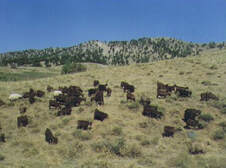 Written by H.R. Bahmani, N. Papi, F. Mirzaei Animal Science Research Institute of Iran, Karaj, Iran History of goat breeding in the province The archaeological excavations show that Aryans were the first to domesticate goats for the first time. They were domesticated more than 9000 BC in Asia and the Middle East, especially in the lands now called Kurdistan. Given the many similarities in terms of coverage and characteristics of the produced fiber between Markhoz goats and Angora goats, they have been known as Iranian Angora goats and their fiber as mohair in some references. Some researchers assume the center of Anatolia and many have speculated Asia Minor as the origin place of Angora goats, especially where Kurds live in Iran, Iraq, and Turkey. The variation in the goats in Kurdish areas supports the latter speculation. Markhoz goat population may have been part of the core Angora goats isolated from its population in Iraq and Turkey for long years. Geographic distribution areas Markhoz goats have dispersed for years away in the provinces of Kurdistan, West Azerbaijan, and Kermanshah. At present, there are only few of them in a small part of Kurdistan and West Azerbaijan provinces. More than 90 percent of the population of Markhoz goats are scattered in its natural habitat, in the county of Armarda in the vicinity of the city of Baneh  Country Representative for Iran Farhad graduated with a B.Sc. in Animal Science and M.Sc. in Animal Husbandry Economics from Iran and was awarded a Ph.D. in Livestock Production Management from the National Dairy Research Institute, Karnal, India. His Ph.D. research focused on goat and kid rearing and breeding. Scientists at Iran's Royan Research Institute has succeeded in producing the country's third cloned goat belonging to Murcia-Granada breed of goat. Dr. Mahdi Hajian, Head of Embryology Department at Isfahan Campus of Royan Research Institute, made the announcement asserting "following successful cloning of Saanen and Alpine goats, we sought to clone a third one from Murcia-Granada breed."
READ MORE HERE... |
IGA Blog
The International Goat Association promotes goat research and development for the benefit of humankind, to alleviate poverty, to promote prosperity and to improve the quality of life. Archives
May 2024
Categories
All
|
|
International Goat Association
2516 Millbrook Rd., Little Rock, AR72227 USA email: [email protected] -454-1641 |
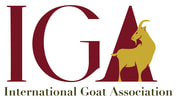
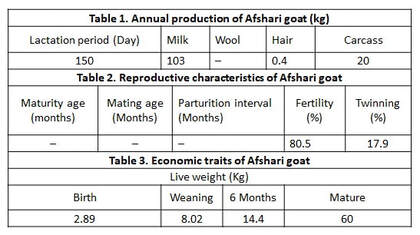
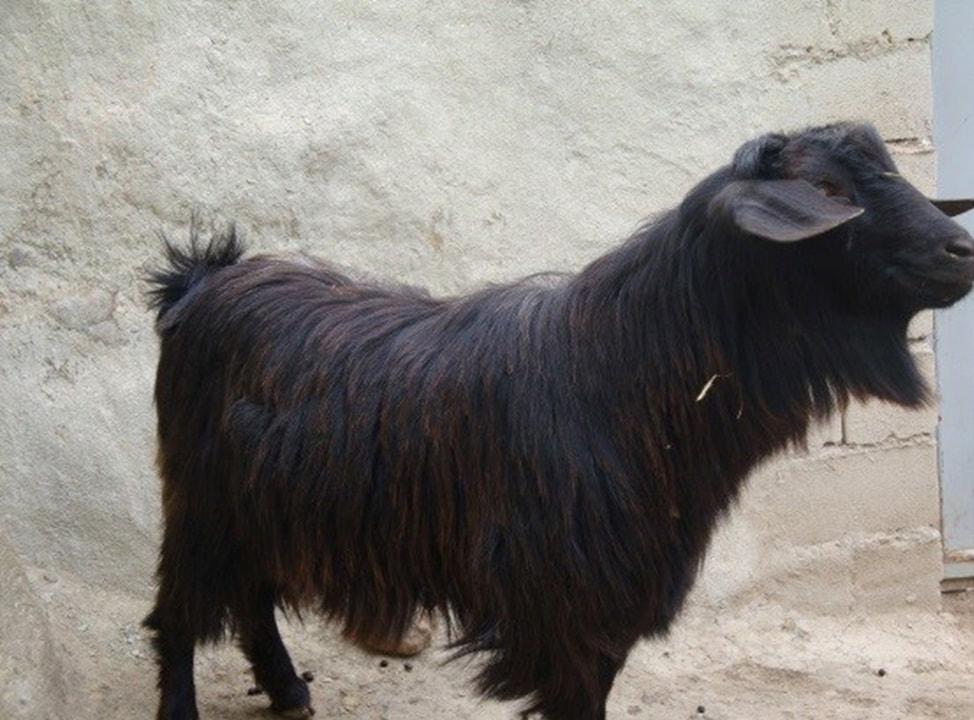
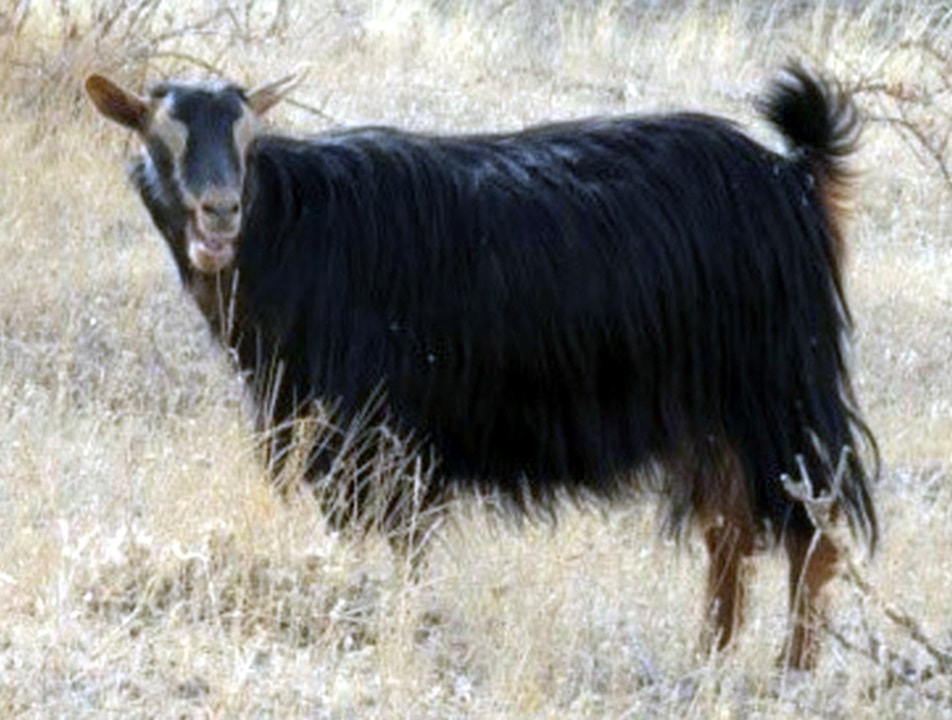
 RSS Feed
RSS Feed